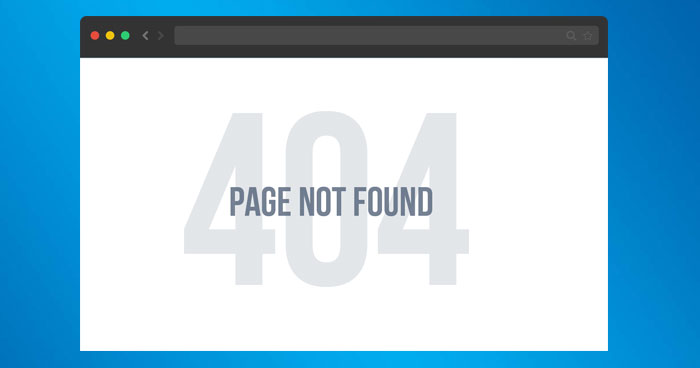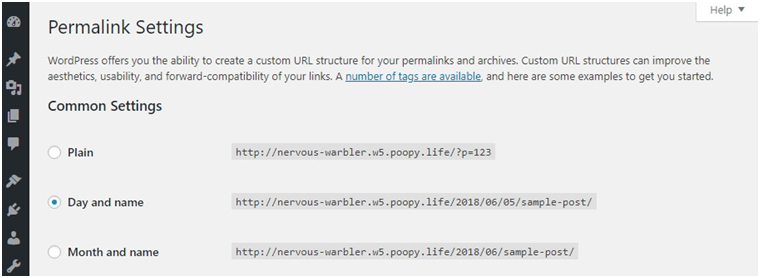
It measures user satisfaction, and they’ll leave if they don’t like what they see. The bounce percentage or bounce rate is the number of people, out of a hundred, that leave a website without having clicked even a single time. In addition, if you have a lot of 404 pages, your bounce rate will increase. However, if their tracking tools detect several 404 errors on your site, they may think that the website isn’t well maintained or kept up to date – and they may start showing it less frequently to avoid bad user experiences. 

Positioning on GoogleĪccording to Google itself, having 404 pages doesn’t affect positioning… at first. The truth is that if your online shop shows too many 404 errors, you may suffer several negative consequences: ✅ 1. You might be thinking, “ What’s the big deal? Clients click the back button, leave the error page, and that’s that. Consequences of having a 404 in your e-commerce If one of your products is sold out or you don’t sell it anymore and forget to deactivate its URL, visitors will end up seeing a 404 error. This is one of the most common errors for an e-commerce. Fix your 404 errors and turn them into sales opportunitiesĪ 404 error means that the page a user is trying to reach is not available (for whatever reason) or that it no longer exists.It should be a simple, fast, and usable page Use your 404 page to generate engagement (with examples).And what if the error comes from the client side and not your shop? Why 404 errors may appear in your online shop.Consequences of having a 404 in your e-commerce.
404 NOT FOUND ERROR FIX FREE
You can use free tools like Dead Link Checker to find your broken links and missing pages. If you're getting reports of 404 errors on a site that you manage, make sure that no pages have been deleted accidentally, and that all your links and buttons lead to the correct URLs. If you're trying to reach a page on a small website, the site manager probably wants to know if there are broken links on the site, because a significant number of 404 errors can damage the website's reputation and search engine ranking. If you know that the page you're looking for was around for a while, there's a good chance that the Wayback Machine has it saved. The Wayback Machine is a free utility that lets you see what specific URLs would look like at various points in the past.
Use the Internet Archive's Wayback Machine. If you can see the webpage from another device, it's probably a problem with your computer's cache. If you have another computer, phone, or tablet available, try the page there. Use Google (or a similar search engine) to try and find the page again. 404 errors may be momentary glitches that you can resolve by refreshing your web browser on a page.  Double-check the URL you've entered, especially if you typed it by hand. Here are some ways you can try to resolve a 404 error: If you receive a 404 error when trying to reach a particular webpage, it's not always clear what went wrong. In some cases, these pages are so UI-friendly that it's hard to tell you've even hit a 404 error. Many websites now have their own custom 404 pages, which help users more easily find what they're looking for.
Double-check the URL you've entered, especially if you typed it by hand. Here are some ways you can try to resolve a 404 error: If you receive a 404 error when trying to reach a particular webpage, it's not always clear what went wrong. In some cases, these pages are so UI-friendly that it's hard to tell you've even hit a 404 error. Many websites now have their own custom 404 pages, which help users more easily find what they're looking for. 
As a result, there are fewer "broken" pages than there once were. As a visitor, you might not end up on the exact page you requested, but you won't be stranded on a 404 error page, either. If a website is planning to delete or unpublish a webpage, that page now usually gets redirected to a different page.
Most major websites now redirect users away from 404 pages automatically. That said, compared to the early days of the internet, finding 404 errors isn't as easy as it used to be. Even Business Insider has its own 404 pages, which display when you try to visit a page that doesn't exist. It's the easiest way to tell a user that they're in the wrong place. Nearly every website has the potential to give you 404 errors. What's happening is simply that your browser is asking a website to display something, the website can't find the right page to display, so it gives you an error instead. Most people find them when they try to go to a specific webpage that doesn't exist anymore. 404 errors are common, and if you're reading this, there's a good chance you've encountered one before.








 0 kommentar(er)
0 kommentar(er)
